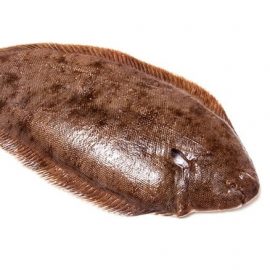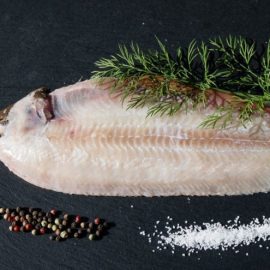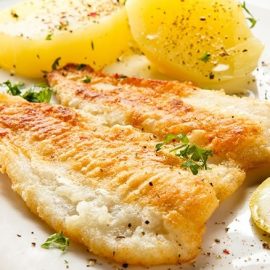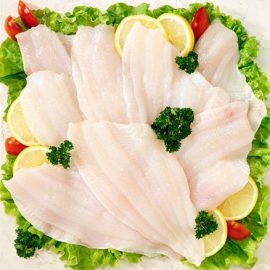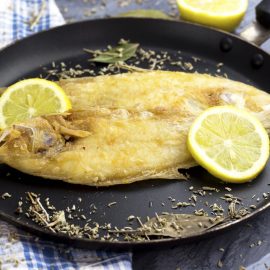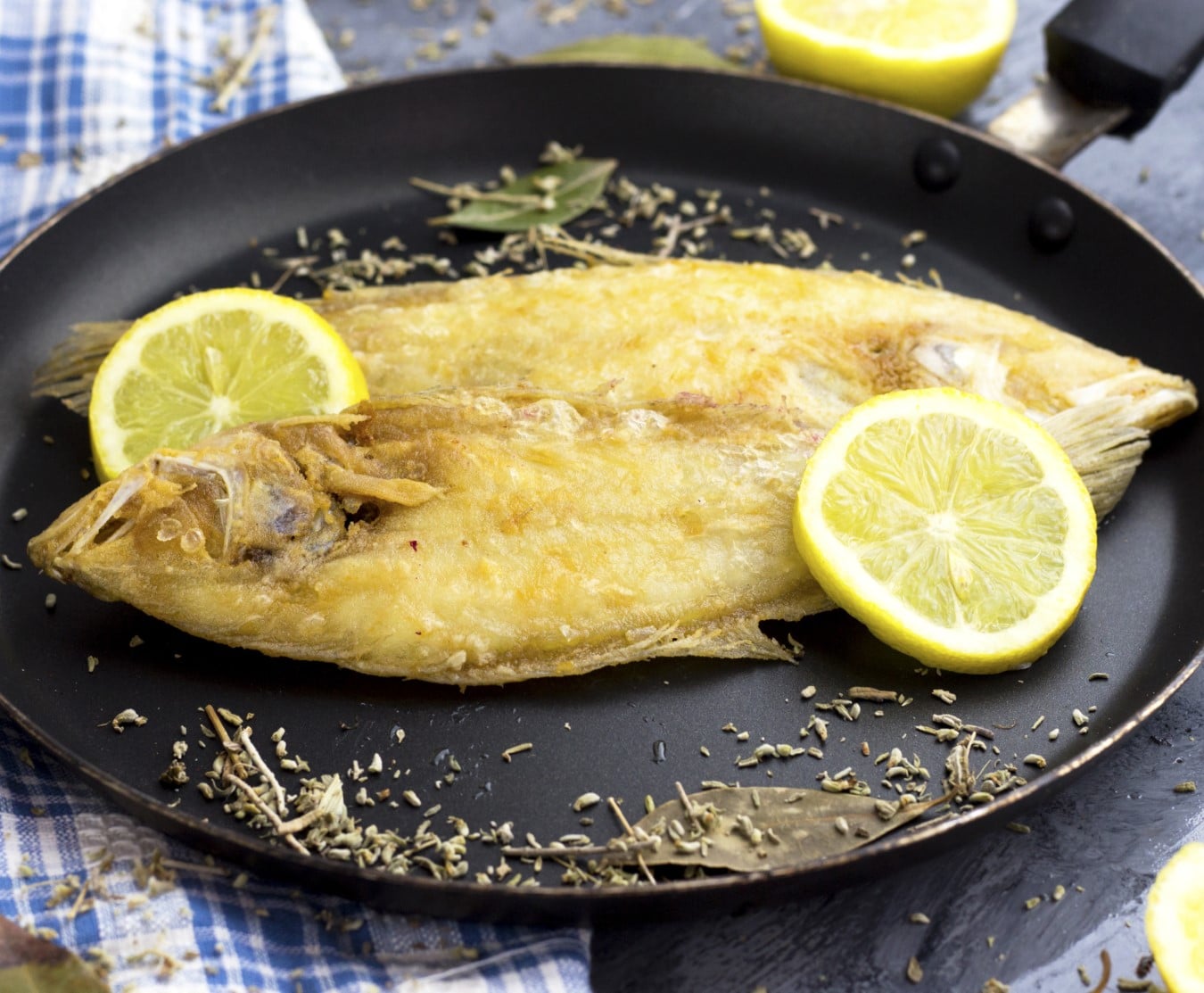
If you have never tasted Lemon sole before, you will wonder why you haven’t. Deliciously flavoured, such a tasty fish will delight your taste buds.
Fortunately, it’s best eaten when it’s prepared easily, so you can spend more time with your family instead of in the kitchen.
What is Lemon Sole?
Although it is named lemon sole ( Microstomus kitt ), the fish doesn’t taste at all like lemon. Instead, its flavour is sweet and delicate. Rather, its name is derived from its lemon-like shape.
In addition, lemon sole fish aren’t soles but flounders. Although they are not related to Dover sole, both are comparable. Generally, lemon soles are about 30cm long, but they can grow to 65cm in length. As it lies left-handed, the eyes are on its left side, its belly is white, and its skin is brown with flecks. There are smooth curved dorsal and anal fins that reach almost to the tail. Marbling on the eye side contains both lighter and darker coloured spots. Behind its pectoral fin, the lemon sole is covered in orange patches.
There are large populations of this fish in northern Europe and the UK, and it feeds mainly on sea worms, crabs, shellfish, and prawns. It is believed that sand and stones make up the most suitable seabed for this type of sea creature. It is common for them to be found at depths of 20-220 meters in coastal waters. They migrate further out as they mature after breeding in shallow waters in springtime. Lemon soles are fully grown after about 4-5 years of breeding.
Commercial value of Lemon Sole
In addition to its flat oval shape, lemon soles have white flesh that is sweet and delicate. Whole and filleted lemon soles are available.
Larger fish are cut into fillets down, while whole lemon sole can be eaten in its whole form. Frozen lemon sole fillets are a better option than whole fish when cooking sole unless a whole fish is called for in the recipe. There are two types of lemon sole fillets: skinless and skinless.
Whole lemon soles have an oval flat form and white flesh with a soft, sweet flavour. Whether it’s for sole meunière or any other sole recipe, you’ll enjoy its mild, buttery taste.
What does Lemon Sole taste like?
This is a misleading term since the lemon sole is neither a real sole fish nor does it have a lemony flavour. However, the colour is pale yellow. It belongs to the flounder family, along with turbot and plaice. It is an incredibly tasty fish with white flesh that is sweet and delicate. If the fish are larger, they can be filleted, floured, or breaded and fried, although they are best cooked simply. A light sauce can be served with the Lemon sole either grilled, fried or baked and placed in a preheated baking tray. Mash potatoes with lemon zest are delicious with them.
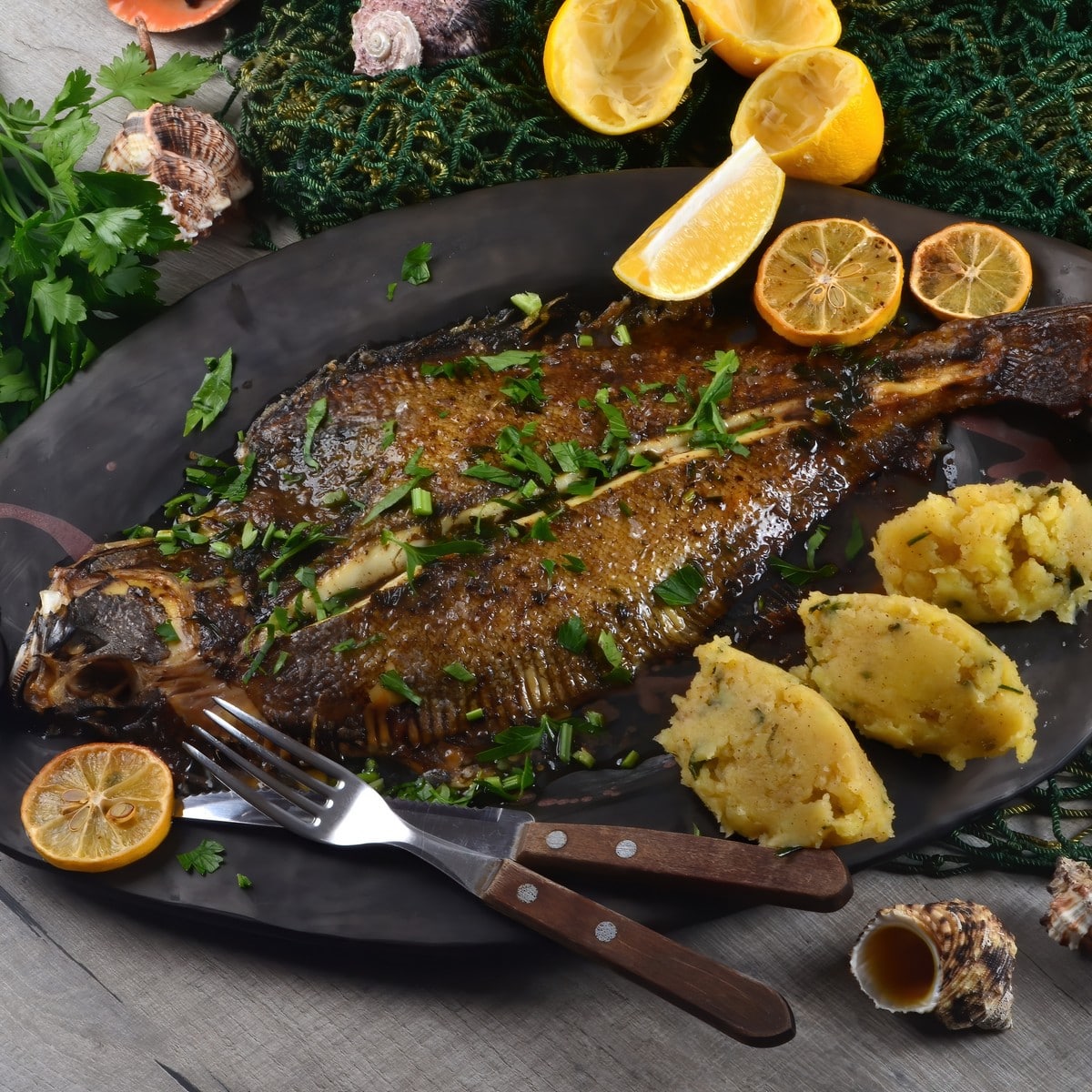
Is Lemon Sole good for you?
In addition to being a good source of protein, the lemon sole is also rich in vitamins B, phosphorus, and iodine. B12 is essential for healthy blood and B3 is essential for healthy skin, so it is ideal for those watching their cholesterol levels. The regular consumption of Lemon sole has a beneficial effect on the body’s health and vitality.
Nutritional profile of Lemon Sole
Per 100g serving of Lemon sole fillet contains:
- Calories: 91kcal
- Protein: 18.84g
- Cholesterol: 48mg
- Total Fat: 1.19g
- Carbohydrates: 0
- Sugar: 0
What to look for when buying lemon sole
From January to May, lemon sole can be found in abundance, particularly in Cornwall. It is therefore very reasonably priced, making it a better deal than Dover sole. Despite the MCS’s rating, you should only buy it from a reliable manufacturer.
Choose fish that are larger than 25cm if possible, demonstrating clear eyes, a firm texture, and a fresh sea scent. Ensure that the tail and fins are in good condition plus good packaging of the fish product.
In general, one fish is served per person, mostly whole, eliminating any concerns about food wastage. It is also possible to purchase fillets that have been prepared already. When buying from a fishmonger, ask to keep the sole bones since they are perfect for stock.
Storing Lemon Sole
To get the most out of lemon sole fillets, they should be consumed as soon as possible. Refrigerate at 0°C to 5°C and eat within 3 days. Immediately after delivery, freeze and use within 2 months. Defrosting in the fridge overnight is ideal when planning to oven cook.
How to cook Lemon Sole?
Common methods
With its sweet, delicate flesh, the lemon sole is ideally prepared simply by grilling or frying and serving accompanied by a simple dressing.
Lemon sole is easily baked, steam-cooked, or grilled. Due to its leanness, the fish should not be cooked too long. To avoid overcooking, keep the skin intact and cook at medium heat.
There’s no better way to cook fish than by cooking it whole; it takes no time at all and is easy to prepare, plus the smaller fish make perfect servings. Serving it up on impressive platters is a great option, or you can fillet it after cooking. You will be able to peel off the firm brown skin without much difficulty, and you can easily separate the flesh from the bones after you do so.
When preparing fish fillets, you should dust them with flour first, so that they will be crispy and golden and not require a long cooking time, otherwise, they will dry out. It is also a good idea to roll the fillets up and steam or bake them to keep them moist.
If you’re searching for an appealing dish that’s simple to make, look no further.
Best accompaniment
Lemon sole pairs well with side dishes. If your juicy fish requires a taste or texture change, serve it with something else.
To prevent overpowering the taste of the fish, try cabbage wedges, or light salad toppings.
If you want to enhance the taste of your meal, use a flavour that boosts its taste. A delicious and simple side meal can be made with it and baked asparagus, sprinkled with shredded parmesan cheese.
Rather than noodles or rice, steam some vegetables for a low-calorie meal later.
Drink pairing for Lemon Sole
With the fish, you can pair a rich white wine like New World chardonnay and white Burgundy. Suitable for fish. The creamy, velvety taste of the wine complements it well. In addition to Italian whites, Champagne also works well with them.
Popular Lemon Sole recipes
Grilled Lemon Sole with dumplings & lemon sauce
At home, grilling portions or fillets of the lemon sole is a healthy and convenient way to prepare the fish. Using the most pristine Lemon sole, this dish is intensely flavourful without being heavy.
En papillote Lemon Sole
Cooking fish en papillote, or in an oven-safe bag, is a delicious method. A piece of greaseproof paper or parchment can be used to make bags. You can mix in any flavours and liquids you want as the fish steams.
Baked lemon sole with lemon & caper paste
This scrumptious seafood dinner for two is perfect for serving as a couple’s meal.
Lemon sole with crab & tarragon butter sauce
A simple serving of potatoes and greens enhances the presentation of this baked whole fish.
Substitutes for Lemon Sole
Often confused with plaice, the delicate, sweet flesh can be enjoyed as a fillet or on the bone. During the summer, whole fish and fillets are available. There are many alternatives, including halibut, plaice, Dover sole, flounder, and brill.
Sustainability of Lemon Sole
Despite being a bycatch during commercial fishing, Lemon Sole has gained popularity and isn’t under threat of overfishing right now.
